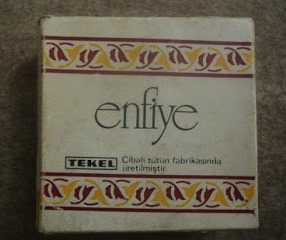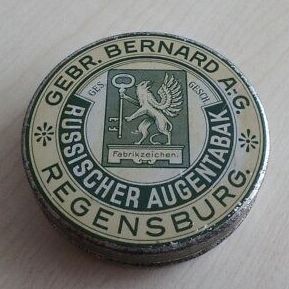This is a very simple recipe of Peterburgian snuff, which was made in Poland (Union factory, Warsaw) in the second half of the 19th century. It was the most popular snuff among those produced by Union.
“Add 15% of wood ash, 10% of potash, 7% of salt, 2% of fragrant meleot herb to the dust of the very best mahorka; after mixing and sieving it properly, add drops of fragrant bergamot oil, then package it up”.
Meleot - Melilotus officinalis (yellow sweet clover), mahorka - Nicotiana rustica.
Potassium carbonate can be substituted with 7.7 % of sodium carbonate (anhydrous) for the same effect. Sweet clover contains coumarin, so it can be substituted with tonka beans, adding them to taste into the finished snuff.
Here’s a link to the blog in Russian where I found this recipe: За понюшку табаку - Мастерок.жж.рф — LiveJournal
A very interesting article about snuff taking in Russia there with a reference to another, more sophisticated old recipe of stoved Rose snuff, made from fine rustica flour, alkalized with wood ash and scented with a mixture of rose water, pine oil and rose oil.
Rose snuff recipe is disclosed in the book “Moskva i moskvichi” (“Moscow and Muscovites”) by V. A. Gilyarovskij (1926, Moscow), here’s a link to the snuff-dedicated chapter: http://www.gilyarovsky.ru/index.php/2010-09-11-15-43-53/2010-09-11-20-14-03
"Купить полсажени осиновых дров и сжечь их, просеять эту золу через сито в особую посуду.
Взять листового табаку махорки десять фунтов, немного его подсушить (взять простой горшок, так называемый коломенский, и ступку деревянную) и этот табак класть в горшок и тереть, до тех пор тереть, когда останется не больше четверти стакана корешков, которые очень трудно трутся: когда весь табак перетрется, просеять его сквозь самое частое сито. Затем весь табак сызнова просеять и высевки опять протереть и просеять. Золу также второй раз просеять. Соединить золу с табаком так: два стакана табаку и один стакан золы, ссыпать это в горшок, смачивая водой стакан с осьмою, смачивать не сразу, а понемногу, и в это время опять тереть, и так тереть весь табак до конца, выкладывая в одно место. Духи класть так: взять четверть фунта эликсиру соснового масла, два золотника розового масла и один фунт розовой воды самой лучшей. Сосновое масло, один золотник розового масла и розовую воду соединить вместе подогретую, но не очень сильно; смесь эту, взбалтывая, подбавлять в каждый раствор табаку с золою и все это стирать.
Когда весь табак перетрется со смесью, его вспрыскивать оставшимся одним золотником розового масла и перемешивать руками. Затем насыпать в бутылки; насыпав в бутылки табак, закубрить его пробкой и завязать пузырем, поставить их на печь дней на пять или на шесть, а на ночь в печку ставить, класть их надо в лежачем положении. И табак готов".
















